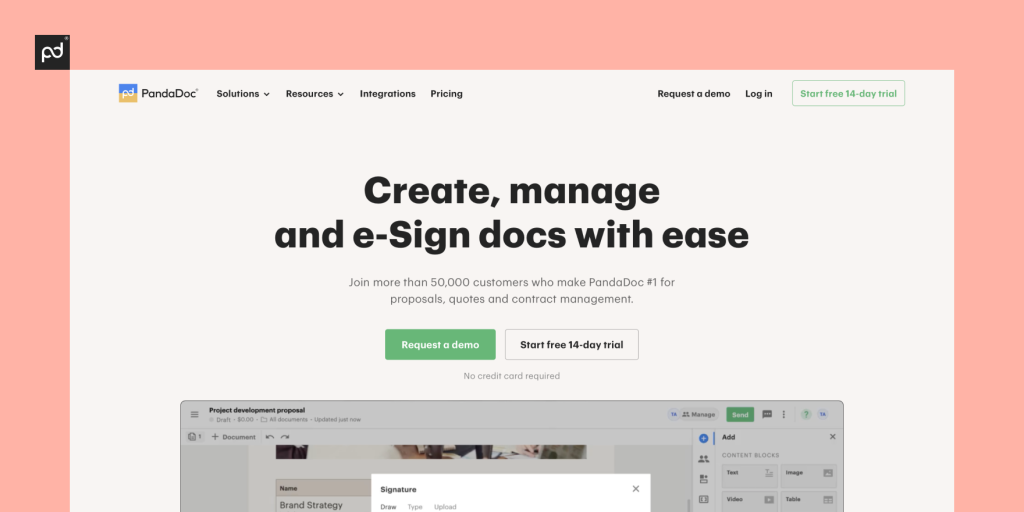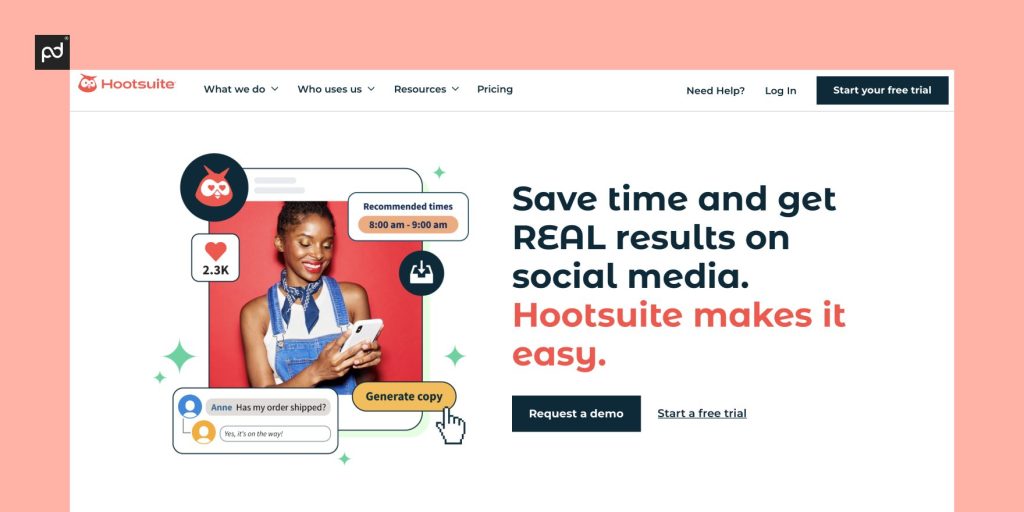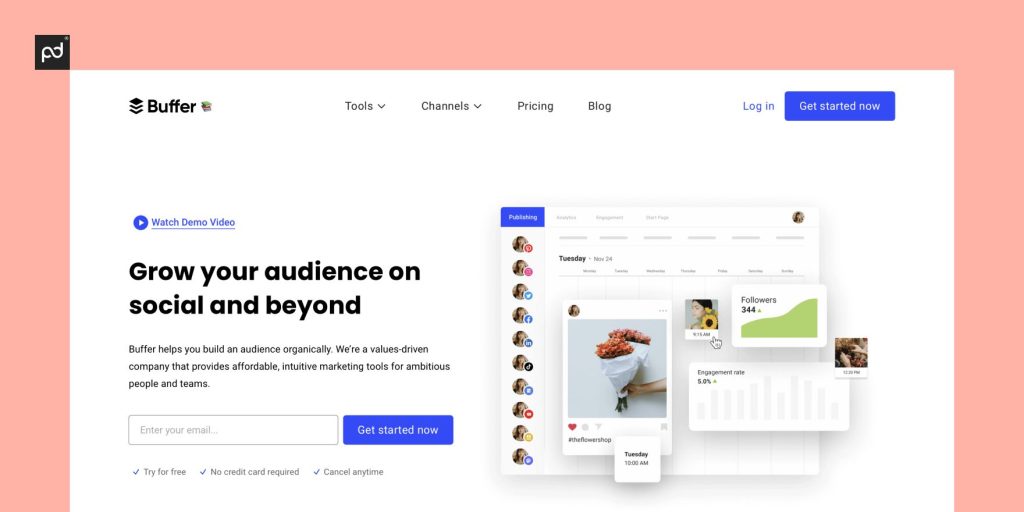No one ever said that running a business was easy.
However, the rise of automation software over the past few years has made it much simpler to automate a whole range of processes to save your company time, money, and effort.
In this article, we discuss 11 of the best time-saving business automation platforms and show how you can use them to improve efficiency in your organization.
What is business process automation?
Automation can be a scary word in the world of business.
However, process automation is all about freeing you and your staff up to perform tasks that add real value to your organization, whether that’s brainstorming new product ideas or inspiring your team to achieve more.
Think about how much time you waste on low-level business processes.
These are usually absolutely necessary — think filling out forms and documents or finding the login details for your company’s various social media accounts — but they aren’t what inspires you to get out of bed in the morning.
Business process automation simply means using software and technology to handle many of these tasks for you.
As a result, you’ll find productivity increases while your costs reduce.
Even ignoring these upsides, technology also tends to be better at these sorts of tasks than humans. Whether you’re a small business or a huge enterprise, error rates typically decrease when automation is introduced, providing a better service or product for your customers.
Importantly, employees find that they enjoy their work more, too, as they’re able to focus on the more challenging and creative aspects of their roles.
11 top pieces of business process automation software and what they do
It’s clear that using business process automation tools makes sense for your company in theory—but what about trying it for yourself?
Here are some of the best options if you’re looking to invest.
1. PandaDoc

Creating, filling out, and sending documents is one of the most tedious business processes. Fortunately, PandaDoc provides workflow automation software that creates a simple and easy flow of documents throughout your organization.
As well as being able to access a wide range of templates for contracts and other forms, you can use PandaDoc to keep control of your paperwork.
You’ll be able to see when documents have been signed, for instance, while employees across your company can collaborate on the same document in synchronicity.
Fortuitously, PandaDoc offers a free tier with limited features, and you can also try their more expensive options on an unpaid trial basis (normally, the Essentials tier costs $19 per seat per month, and Business is $49 per seat per month).
If you choose to invest in one of these paid options, you benefit from being able to send and sign an unlimited amount of documents.
Business users can also integrate their CRM with their document workflows.
2. Zapier

The number of apps available to businesses has made life much easier—but switching between them all can sometimes be bewildering.
Let’s say you receive emails in Gmail but want to save attachments to Dropbox. Rather than manually switching between them, Zapier can automatically perform this process for you.
There’s a huge range of possible automations you can create, with thousands of ways to boost your productivity.
Think of all the time that’s usually spent on these simple but repetitive tasks—and then imagine what you could do with all those extra hours!
Zapier’s core features are available for free, but teams can also opt to pay $69 a month to add an unlimited number of users, access premium support, and share app automations across a team.
3. Hootsuite

If you want to get your brand in front of as many potential customers as possible, you need a consistent presence across your social media channels.
However, uploading the same post to Instagram, Twitter, Facebook, Snapchat, and so on is a time-consuming endeavor.
Luckily, Hootsuite enables you to view all your social channels via one simple dashboard.
You can easily schedule content to be uploaded in advance, and it also provides AI-generated captions and content ideas.
With a range of tiers, priced between $49 and $739 a month depending on the size of your organization and your needs, you’ll never have to worry about remembering dozens of usernames and passwords again.
4. Buffer

Another similar piece of software is Buffer.
It offers many of the same features as Hootsuite, providing another option if you’re looking to streamline your content publishing schedule and automate social media uploads.
Unlike Hootsuite, however, Buffer offers a free plan, and its paid tiers might work out cheaper for some, as they start at $6 a month per channel.
That said, you will have to sign up for a more expensive option, at $12 a month per channel, if you want to be able to reply to social media comments through your dashboard.
This is important as many companies now use their social media channels as customer service tools.
Whether Hootsuite or Buffer is a better solution will depend on your company’s needs and scope, with small businesses and individual creators tending to prefer the latter’s simpler and more intuitive design.
5. Grammarly

Spelling mistakes and grammatical errors in your promotional materials or emails aren’t just embarrassing; they can represent a real hit to your credibility with clients and customers.
Fortunately, the age of meticulously rereading your copy and leafing through a weighty dictionary is over.
By copying your content into Grammarly, you’ll receive a line-by-line check for spelling and grammar mistakes.
Its basic function can be accessed by anyone online for free, but Grammarly also offers a paid Business tier that starts at $15 a month.
With this, you can add in-house style guides, establish a brand tone of voice, and access detailed analytics about your team’s writing.
6. IFTTT

Like Zapier, the IFTTT platform lets you build automations between various third-party apps.
The principle is the same—to save you time as you use different and disconnected applications by automatically updating them according to the criteria you set.
However, IFTTT is primarily designed for personal users.
That doesn’t mean it can’t be useful for businesses—after all, you can still create automations for crucial business apps like Google Calendar.
Its free tier is also more useful than Zapier’s.
On the other hand, you can only have one account, which means you can’t use it for your whole team.
As well as this, you can only set up one automation per trigger, while Zapier enables you to create multiple automations in different apps for each trigger.
7. Calendly

Arranging a time to meet new clients or business partners can require hours of back-and-forth phone calls and email discussions.
Calendly aims to make this process easier.
All you have to do is enter the times you’re available into Calendly and email a link; the other person can then choose the option that best suits them.
Calendly will automatically update your calendar, too, when appointments are booked.
Calendly’s free tier is great for individual users, with functionality to connect to other productivity apps like Slack.
However, there’s also an option for teams that costs $16 per seat per month and includes integration with more advanced CRM software and the ability to create events for your whole team.
8. ActiveCampaign

ActiveCampaign includes a lot of different types of business automation, incorporating everything from sales pipeline software to marketing automation and CRM tools.
This means you can use it for a range of sales-related business processes.
Let’s say you want to log your customer data—its CRM tools can help you.
Alternatively, you might want to send out email messages, in which case its automated marketing is great for that.
Or you might require software that orders your sales process—that’s where its sales pipeline tools come in.
With such a large range of functions, it shouldn’t be a surprise that ActiveCampaign requires a significant investment.
Its professional plan starts at $149 per month for five users.
However, this compares quite favorably with other multi-functional CRM providers.
9. Google Data Studio

What used to be called Google Data Studio is now called Looker Studio; however, it still offers the same functions and business process automation.
If you want to make intelligent business decisions, the use of data is invaluable, but making and sharing visualizations can take a lot of time.
That’s why Looker Studio is useful for businesses of any size.
You can use it to create automated reports and visualizations from a dataset, meaning your data team can focus on more difficult tasks than communicating their insights.
You can use Looker Studio individually for free, but it will cost you to access its business-level tiers.
Prices start at $30 per user per month, but specific costs will depend on the size of your organization and the detail you need your data reports and visualizations to go into.
10. Mailchimp

While manually sending out email campaigns might be possible when you’re first starting out as a small business, it’s impossible to keep it up as your company grows.
Mailchimp offers a service that automates email marketing, providing an easy route to conversions.
You simply schedule an email and it’s sent to all the customers you want.
You can also use Mailchimp’s AI-powered content creation tools to make writing emails a breeze.
While there is a basic option that’s available for free, to get the most out of Mailchimp, you’ll have to sign up for its Standard tier.
This includes more optimization tools and costs $20 a month. However, you can try it for free first to make sure it’s right for your business before you invest.
11. Asana

Project management was difficult enough when most businesses worked in offices; now that working from home is popular, managing a large project can mean juggling hundreds of email conversations and Slack channels.
Asana is a great tool to overcome these issues.
With Asana, you can assign specific tasks to team members and create task timelines. Let’s say you need to get someone to respond to customer reviews.
Rather than having to contact them individually, you can assign the task in Asana’s dashboard and easily attach links to the reviews you need them to cover.
As well as boosting productivity, Asana is a great way to visualize even the most complex of projects, with boards that everyone in your team can access and a progress tracker that measures how well you’re doing.
Its basic option is free, but this is only recommended for individuals or very small teams.
Most companies will need to choose between either the Premium option, at $10.99 per user per month, or Business at $24.99 per user per month.
How we get our data
When compiling our content, our team looks at a huge collection of information, including:
- Business websites
- Independent publications
- Customer reviews and feedback
We always consider the source of any data we come across during our research, evaluating it based on key factors like reputability, reliability, and topical relevance.
Our goal is to provide accurate and trustworthy information to readers so they can make accurate and informed decisions.
When we discuss the features and prices of specific pieces of software, we always consult providers’ websites for the most up-to-date information.
We balance this with reviews and our own analysis to give you a fair picture of any software we mention.
Use business automation tools to save your business time and money
Business automation software is an invaluable weapon in any modern company’s arsenal; wasting time on menial processes, like manually sending marketing emails or individually contacting team members to assign tasks, will leave you lagging behind your competitors.
That’s why the business automation products we discussed in this article are so useful.
With time-saving tools like PandaDoc’s document workflow software, you’ll soon be able to boost your team’s productivity, efficiency, and accuracy, helping your company to keep on growing.
Disclaimer
PandaDoc is not a law firm, or a substitute for an attorney or law firm. This page is not intended to and does not provide legal advice. Should you have legal questions on the validity of e-signatures or digital signatures and the enforceability thereof, please consult with an attorney or law firm. Use of PandaDocs services are governed by our Terms of Use and Privacy Policy.


